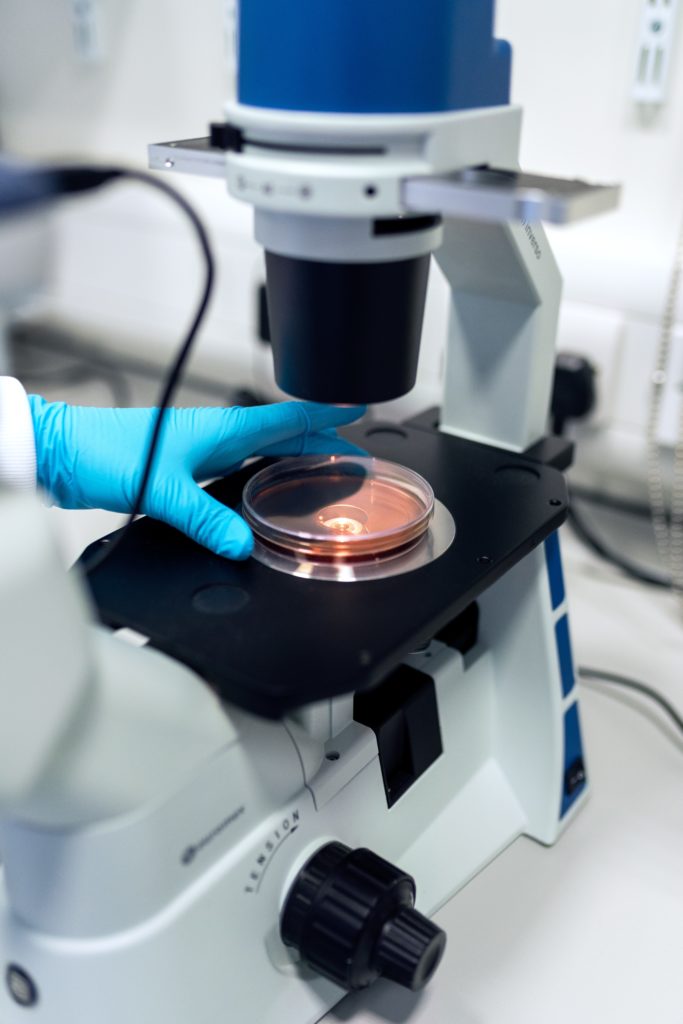COVID-19 and Stem Cell Treatment

Over the last year COVID-19 has majorly shifted our “normal.” Thankfully, scientific research into the virus and potential treatments has have made huge strides during that time.
Information discovered about the COVID-19 pathology – including the devastating cytokine storm – have resulted in new and effective treatments that have successfully reduces the death rate of the virus.
Research has not slowed down though, and if anything, has only uncovered new and exciting possibilities for treatment. With COVID-19 still around after a full year, and new variants being found all over the globe, this new research may be the key to helping us returning to our true normal.
Some of the most exciting research to come out recently is an investigation into the effectiveness of stem cells as treatment of the novel coronavirus. While stems cells have a certain controversy due to their history in the 90s of being sourced from embryos, research has come a long way, and newer more ethical sources of stem cells are now used in research and treatment. But what exactly are stem cells anyway?
Stem cells are almost like a seed – they can grow and develop into different types of cells based on what our body needs. For instance, our bone marrow regularly produces stems cells that are then turned into different types of blood cells. Because stem cells are so nonspecific, they have a wide range of possibilities for medical treatments and research.
Prior to the COVID-19 epidemic, stem cells have successfully and safely been used to help with cardiovascular disease, certain eye diseases, and inflammatory infections. The promising results in regrowing damaged tissues, as well as aiding in immune response, lead to stem cells being research for COVID-19.
In the case of COVID-19, clinical trials and preliminary research suggests that stem cells could be an effective treatment for both those with active infections, as well as those with lingering effects.
For instance, in a Chinese trial, an entire group of research participants who had not responded to standard therapy, recovered after stem cell treatments. In another trial, a 65-year-old patient with respiratory failure showed incredible improvement after only two doses of stem cell treatment, including stable vital signs, respiratory function that no longer relied on a ventilator, and signs of organ failure disappeared. After the third dose, significant improvement in the patient’s lungs were observed in CT images.
It is hypothesized that stem cells are such an effective treatment for the COVID-19 infection due to a number of their properties.
First of all, intravenous stem cell therapy has been noted to be deposited most often in the vascular bed of the lungs. This direct entry into the most effected organ of the COVID-19 infection means that stem cells are able to get to work quickly.
Additionally, some stem cells are known to target ACE2 enzymes, which are the main way that COVID-19 has been known to enter lung tissue.
Lastly, stem cells are able to help regulate the immune system, which in the case of COVID-19, means that they can aid with the harmful cytokine storm that often results in further inflammation and organ damage.
Not only have stem cells shown promising results for treating an active COVID-19 infection, but they also seem to aid in the regenerative growth of lung tissue. COVID-19 has unfortunately left many with long lasting effects even after the infection has subsided. Figuring out how to treat these individuals has been an important point of research. Stem cells may be a viable option for helping to heal lung damage and other damage to organs.
While the research is still only in the first few stages, stem cells could hold the key to stopping COVID-19 debilitating effects on not only our bodies, but our society.
